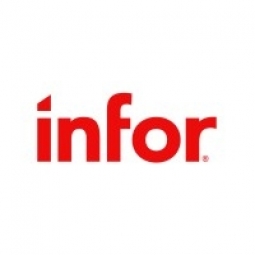Customer Company Size
Large Corporate
Country
- Worldwide
Product
- Birst
Tech Stack
- Cloud-architected BI Platform
Implementation Scale
- Enterprise-wide Deployment
Impact Metrics
- Cost Savings
Technology Category
- Analytics & Modeling - Big Data Analytics
Applicable Functions
- Procurement
Use Cases
- Supply Chain Visibility
Services
- Cloud Planning, Design & Implementation Services
About The Customer
The customer is a global energy management company with operations in more than 100 countries. It offers integrated energy solutions, including solar storage solutions, industrial automation and control, grid automation, and residential solutions. The company has grown through mergers and acquisitions, which has resulted in data being siloed across more than 200 disparate systems. The company aims to gain a holistic view of purchasing behavior across multiple business units and disparate data sources. It seeks to consolidate and optimize $10B in spend on products, components, and raw materials and build a Global Analytics Platform to identify savings opportunities and enable more regular and accurate negotiations with suppliers.
The Challenge
The company faced a significant challenge in gaining visibility into purchasing analytics across more than 200 ERP systems. This was due to its growth through mergers and acquisitions, which resulted in data being siloed across these disparate systems. The company aimed to consolidate and optimize $10B in spend on products, components, and raw materials. It also sought to build a Global Analytics Platform to identify savings opportunities and enable more regular and accurate negotiations with suppliers. However, the company faced technical challenges such as the need for a rapid go-live in a highly complex environment against 200-source ERP. The company's global M&A agenda was also expected to drive further data complexity. Furthermore, the company required true self-service with centralized governance across a complex data landscape.
The Solution
The company chose to implement Birst, a cloud-architected BI Platform. This platform allowed the company to go live quickly, addressing the need for a rapid go-live in a highly complex environment. Birst also provided the agility with governance that the company required to fit both Business and IT requirements. This solution enabled the company to consolidate and optimize its spend, identify savings opportunities, and enable more regular and accurate negotiations with suppliers. It also helped the company manage the data complexity resulting from its global M&A agenda.
Operational Impact
Quantitative Benefit

Case Study missing?
Start adding your own!
Register with your work email and create a new case study profile for your business.
Related Case Studies.

Case Study
Remote Temperature Monitoring of Perishable Goods Saves Money
RMONI was facing temperature monitoring challenges in a cold chain business. A cold chain must be established and maintained to ensure goods have been properly refrigerated during every step of the process, making temperature monitoring a critical business function. Manual registration practice can be very costly, labor intensive and prone to mistakes.

Case Study
Retail Uses RFID to Enable Cold Chain Monitoring
Like most grocery retailers, Hy-Vee is faced with the challenge of providing the highest quality products to its shoppers. Shoppers want the longest possible shelf life from perishable products and expect a consistent product experience each time they shop. Controlling the quality of products sold leads to shopper loyalty, which is of paramount importance to the success of Hy-Vee. Before products arrive in stores, Hy-Vee's distribution centers (DCs) handle items including dairy products, fresh meats, seafood, deli items, produce and frozen goods, all of which have different temperature needs and sensitivities. During transit from suppliers to DCs, Hy-Vee has limited visibility and temperature management abilities due to large amount of supplier managed transportation. For instance, during a week-long transit, a supplier's carrier equipment may malfunction, causing an item to thaw and then refreeze once repairs are made. Hy-Vee sought help from TempTRIP, an RFID solution provider that focuses on shipping, storage, receiving, and temperature control. TempTRIP's EPC RFID tags use Impinj chips to monitor and report temperature readings throughout the shipping and receiving process. The tags can also be re-configured and re-used, a unique feature within the current market of temperature monitoring devices.

Case Study
Covisint Improves Mitsubishi's Collaboration With Its Supply Chain
Mitsubishi sought to improve supplier relationships on a global basis and to offer an easy-to-use solution to interact with them. In August 2004, Mitsubishi selected Covisint’s platform to help improve sharing of information and collaborative business processes with its global suppliers. Covisint enabled Mitsubishi to provide its suppliers with immediate access to information and applications to obtain more collaborative working relationships










